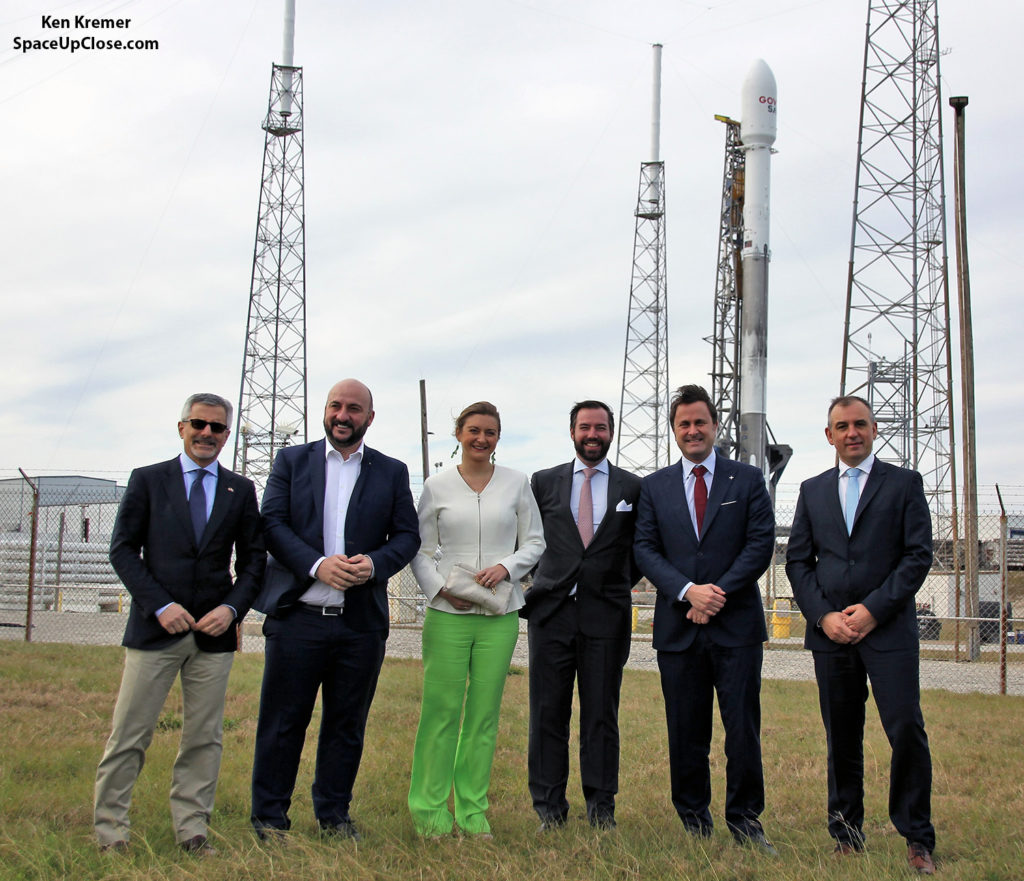 |
|
SpaceX Falcon 9 rocket carrying GovSat-1/SES-16
lifts off at 4:25 p.m. EST from Space Launch Complex 40 (SLC-40) on Cape Canaveral Air Force Station, Florida to geostationary transfer orbit on Jan. 31, 2018. Credit: Ken Kremer/SpaceUpClose.com/www.kenkremer.com
CAPE CANAVERAL AIR FORCE STATION, FL – This afternoon lucky spectators witnessed
a truly gorgeous blastoff of the unique GovSat-1 civilian/military satellite on a ‘flight-proven’ SpaceX Falcon 9 rocket on Wednesday, Jan. 31 – with vastly improved and truly serene weather conditions compared to the gloomy weather overhanging Florida during yesterday’s originally targeted launch opportunity.
Liftoff of the recycled single stick Falcon 9 carrying GovSat-1 took place right at the opening of
the launch window s now scheduled for Wednesday, Jan. 31, 2018 at 4:25 p.m. EST (2125 GMT) from seaside Space Launch Complex-40 (SLC-40) on Cape Canaveral Air Force Station.
“Impressive
to finally see #GovSat1 on its way to orbit,” tweeted Xavier Bettel, the Prime Minister of Luxembourg.
“This
is the beginning of a new experience for @GovSat is strengthening the position of Luxembourg as a key player in the space sector and contributes to a diversification of our economy.” The rocket soared off pad 40 with a bright flash of light and a mounting crescendo of nine roaring Merlin 1 D engines producing 1.7 million pounds of liftoff thrust.
It soon arced over eastwards to the African
continent.
The payload separated from the second
stage 33 minutes after launch as planned.
The launch team had to scrub the launch for 24 hours in order to enable
technicians to fix a balky transducer discovered in the second stage only some 90 minutes prior to T-Zero.
The
Falcon 9 carrying GovSat-1 soared to orbit under picture perfect skies, with modestly warm temperatures and virtually no winds. In marked contrast to yesterdays (Jan. 30) gloomy clouds and extremely brisk, howling and threatening winds.
The strong gusts from both ground winds and upper altitude winds would
very likely have scrubbed the launch anyway, even if it had proceeded absent the forced postponement due to a technical glitch.
Check out our gallery of new photos of blastoff of GovSat-1.
|
 |
||
|
SpaceX Falcon 9 rocket carrying GovSat-1/SES-16
lifts off at 4:25 p.m. EST from Space Launch Complex 40 (SLC-40) on Cape Canaveral Air Force Station, Florida to geostationary transfer orbit on Jan. 31, 2018. Credit: Ken Kremer/SpaceUpClose.com/www.kenkremer.com
The weather forecast was for over 90% favorable conditions at launch time
vs. only 40% favorable yesterday, on Tuesday, Jan. 30.
The two stage 229-foot-tall (70-meter-tall) SpaceX Falcon 9
rocket will deliver GovSat-1/SES-16 to a supersynchronous transfer orbit for GovSat – the SES and Luxembourg government joint venture.
GovSat-1, also known as SES-16, is the first satellite of
GovSat. It is uniquely designed for exclusive use by governments and institutions – including military, humanitarian and maritime users.
The highly
flexible payload featuring advanced encryption and anti-jamming capabilities.
The over 4.5 ton GovSat-1/SES-16 communications satellite launching
Wednesday is a 50:50 joint venture between the Government of Luxembourg and the commercial firm SES, the world’s leading satellite operator.
|



